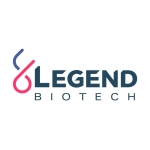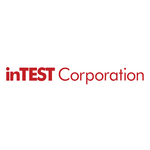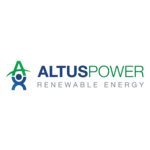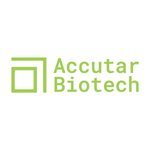SOMERSET, N.J. — (BUSINESS WIRE) — $LEGN — Legend Biotech Corporation (NASDAQ: LEGN) (Legend Biotech), a global biotechnology company developing, manufacturing and commercializing novel therapies to treat life-threatening diseases, announced today that China’s National Medical Products Administration (NMPA) has formally accepted its New Drug Application (NDA) for ciltacabtagene autoleucel (cilta-cel).

This submission is based on data from the confirmatory Phase 2 clinical study CARTIFAN-1 (NCT03758417) conducted in China, which evaluated the efficacy and safety of cilta-cel in adult patients with relapsed or refractory multiple myeloma who have received 3 or more prior lines of therapy, including a proteasome inhibitor and immunomodulatory drug.
Saijuan Chen, M.D., hematologist and molecular geneticist, Academician of the Chinese Academy of Engineering, and principal investigator of the CARTIFAN-1 clinical trial, said: “Incidence and mortality rates of multiple myeloma have recently increased in China, and the disease remains incurable. As a result, there is a huge unmet medical need for new treatment options. The data from the CARTIFAN-1 study showed that cilta-cel provided deep and durable responses in patients with relapsed or refractory multiple myeloma. We hope this drug becomes available to eligible patients as soon as possible.”
Ying Huang, Ph.D., Chief Executive Officer of Legend Biotech, said: “Meeting medical needs and serving patients around the world has always been the goal of Legend Biotech’s innovative research and development. Cilta-cel has been approved for marketing in the United States and Japan and has received conditional marketing authorization in Europe. We look forward to the possibility of providing a new treatment option for appropriate patients with relapsed and refractory multiple myeloma in China.”
###
About Ciltacabtagene autoleucel (cilta-cel)
Ciltacabtagene autoleucel is a BCMA-directed, genetically modified autologous T-cell immunotherapy, which involves reprogramming a patient’s own T-cells with a transgene encoding a chimeric antigen receptor (CAR) that identifies and eliminates cells that express BCMA. BCMA is primarily expressed on the surface of malignant multiple myeloma B-lineage cells, as well as late-stage B-cells and plasma cells. The cilta-cel CAR protein features two BCMA-targeting single domain antibodies designed to confer high avidity against human BCMA. Upon binding to BCMA-expressing cells, the CAR promotes T-cell activation, expansion, and elimination of target cells.1
In December 2017, Legend Biotech Corporation entered into an exclusive worldwide license and collaboration agreement with Janssen Biotech, Inc. (Janssen) to develop and commercialize cilta-cel.
In February 2022, cilta-cel was approved by the U.S. Food and Drug Administration (FDA) under the brand name CARVYKTI® for the treatment of adults with relapsed or refractory multiple myeloma.2 In May 2022, the European Commission (EC) granted conditional marketing authorization of CARVYKTI® for the treatment of adults with relapsed and refractory multiple myeloma.3 In September 2022, Japan’s Ministry of Health, Labour and Welfare (MHLW) approved CARVYKTI®.4 Cilta-cel was granted Breakthrough Therapy Designation in the U.S. in December 2019 and in China in August 2020. In addition, cilta-cel received a PRIority MEdicines (PRIME) designation from the European Commission in April 2019. Cilta-cel also received Orphan Drug Designation from the U.S. FDA in February 2019, from the European Commission in February 2020, and from the Pharmaceuticals and Medicinal Devices Agency (PMDA) in Japan in June 2020. In March 2022, the European Medicines Agency’s Committee for Orphan Medicinal Products recommended by consensus that the orphan designation for cilta-cel be maintained on the basis of clinical data demonstrating improved and sustained complete response rates following treatment.5
About CARTIFAN-1
CARTIFAN-1 (NCT03758417)6 is a Phase 2 open-label, confirmatory trial evaluating the efficacy and safety of cilta-cel in Chinese patients with relapsed/refractory multiple myeloma who have received at least three prior lines of treatments including a proteasome inhibitor and immunomodulatory drug. The primary endpoint is overall response rate.
About Multiple Myeloma
Multiple myeloma is an incurable blood cancer that starts in the bone marrow and is characterized by an excessive proliferation of plasma cells.7 In 2022, it is estimated that more than 21,000 people will be diagnosed with multiple myeloma, and more than 16,000 people will die from the disease in China.8 While some patients with multiple myeloma have no symptoms at all, most patients are diagnosed due to symptoms that can include bone problems, low blood counts, calcium elevation, kidney problems or infections.9 Although treatment may result in remission, unfortunately, patients will most likely relapse.10 Patients who relapse after treatment with standard therapies, including protease inhibitors, immunomodulatory agents, and an anti-CD38 monoclonal antibody, have poor prognoses and few treatment options available.11,12
CARVYKTI® U.S. Important Safety Information
INDICATIONS AND USAGE
CARVYKTI® (ciltacabtagene autoleucel) is a B-cell maturation antigen (BCMA)-directed genetically modified autologous T cell immunotherapy indicated for the treatment of adult patients with relapsed or refractory multiple myeloma, after four or more prior lines of therapy, including a proteasome inhibitor, an immunomodulatory agent, and an anti-CD38 monoclonal antibody.
WARNING: CYTOKINE RELEASE SYNDROME, NEUROLOGIC TOXICITIES, HLH/MAS, and PROLONGED and RECURRENT CYTOPENIA
- Cytokine Release Syndrome (CRS), including fatal or life-threatening reactions, occurred in patients following treatment with CARVYKTI®. Do not administer CARVYKTI® to patients with active infection or inflammatory disorders. Treat severe or life-threatening CRS with tocilizumab or tocilizumab and corticosteroids.
- Immune Effector Cell-Associated Neurotoxicity Syndrome (ICANS), which may be fatal or life-threatening, occurred following treatment with CARVYKTI®, including before CRS onset, concurrently with CRS, after CRS resolution, or in the absence of CRS. Monitor for neurologic events after treatment with CARVYKTI®. Provide supportive care and/or corticosteroids as needed.
- Parkinsonism and Guillain-Barré syndrome and their associated complications resulting in fatal or life-threatening reactions have occurred following treatment with CARVYKTI®.
- Hemophagocytic Lymphohistiocytosis/Macrophage Activation Syndrome (HLH/MAS), including fatal and life-threatening reactions, occurred in patients following treatment with CARVYKTI®. HLH/MAS can occur with CRS or neurologic toxicities.
- Prolonged and/or recurrent cytopenias with bleeding and infection and requirement for stem cell transplantation for hematopoietic recovery occurred following treatment with CARVYKTI®.
- CARVYKTI® is available only through a restricted program under a Risk Evaluation and Mitigation Strategy (REMS) called the CARVYKTI® REMS Program.
WARNINGS AND PRECAUTIONS
Cytokine Release Syndrome (CRS) including fatal or life-threatening reactions, occurred following treatment with CARVYKTI® in 95% (92/97) of patients receiving ciltacabtagene autoleucel. Grade 3 or higher CRS (2019 ASTCT grade)1 occurred in 5% (5/97) of patients, with Grade 5 CRS reported in 1 patient. The median time to onset of CRS was 7 days (range: 1-12 days). The most common manifestations of CRS included pyrexia (100%), hypotension (43%), increased aspartate aminotransferase (AST) (22%), chills (15%), increased alanine aminotransferase (14%) and sinus tachycardia (11%). Grade 3 or higher events associated with CRS included increased AST and ALT, hyperbilirubinemia, hypotension, pyrexia, hypoxia, respiratory failure, acute kidney injury, disseminated intravascular coagulation, HLH/MAS, angina pectoris, supraventricular and ventricular tachycardia, malaise, myalgias, increased C-reactive protein, ferritin, blood alkaline phosphatase and gamma-glutamyl transferase.
Identify CRS based on clinical presentation. Evaluate for and treat other causes of fever, hypoxia, and hypotension. CRS has been reported to be associated with findings of HLH/MAS, and the physiology of the syndromes may overlap. HLH/MAS is a potentially life-threatening condition. In patients with progressive symptoms of CRS or refractory CRS despite treatment, evaluate for evidence of HLH/MAS.
Sixty-nine of 97 (71%) patients received tocilizumab and/or a corticosteroid for CRS after infusion of ciltacabtagene autoleucel. Forty-four (45%) patients received only tocilizumab, of whom 33 (34%) received a single dose and 11 (11%) received more than one dose; 24 patients (25%) received tocilizumab and a corticosteroid, and one patient (1%) received only corticosteroids. Ensure that a minimum of two doses of tocilizumab are available prior to infusion of CARVYKTI®.
Monitor patients at least daily for 10 days following CARVYKTI® infusion at a REMS-certified healthcare facility for signs and symptoms of CRS. Monitor patients for signs or symptoms of CRS for at least 4 weeks after infusion. At the first sign of CRS, immediately institute treatment with supportive care, tocilizumab, or tocilizumab and corticosteroids.
Counsel patients to seek immediate medical attention should signs or symptoms of CRS occur at any time.
Neurologic toxicities, which may be severe, life-threatening or fatal, occurred following treatment with CARVYKTI®. Neurologic toxicities included ICANS, neurologic toxicity with signs and symptoms of parkinsonism, Guillain-Barré Syndrome, peripheral neuropathies, and cranial nerve palsies. Counsel patients on the signs and symptoms of these neurologic toxicities, and on the delayed nature of onset of some of these toxicities. Instruct patients to seek immediate medical attention for further assessment and management if signs or symptoms of any of these neurologic toxicities occur at any time.
Overall, one or more subtypes of neurologic toxicity described below occurred following ciltacabtagene autoleucel in 26% (25/97) of patients, of which 11% (11/97) of patients experienced Grade 3 or higher events. These subtypes of neurologic toxicities were also observed in two ongoing studies.
Immune Effector Cell-Associated Neurotoxicity Syndrome (ICANS): ICANS occurred in 23% (22/97) of patients receiving ciltacabtagene autoleucel including Grade 3 or 4 events in 3% (3/97) and Grade 5 (fatal) events in 2% (2/97). The median time to onset of ICANS was 8 days (range 1-28 days). All 22 patients with ICANS had CRS. The most frequent (≥5%) manifestation of ICANS included encephalopathy (23%), aphasia (8%) and headache (6%).
Monitor patients at least daily for 10 days following CARVYKTI® infusion at the REMS-certified healthcare facility for signs and symptoms of ICANS. Rule out other causes of ICANS symptoms. Monitor patients for signs or symptoms of ICANS for at least 4 weeks after infusion and treat promptly. Neurologic toxicity should be managed with supportive care and/or corticosteroids as needed.
Parkinsonism: Of the 25 patients in the CARTITUDE-1 study experiencing any neurotoxicity, five male patients had neurologic toxicity with several signs and symptoms of parkinsonism, distinct from immune effector cell-associated neurotoxicity syndrome (ICANS). Neurologic toxicity with parkinsonism has been reported in other ongoing trials of ciltacabtagene autoleucel. Patients had parkinsonian and non-parkinsonian symptoms that included tremor, bradykinesia, involuntary movements, stereotypy, loss of spontaneous movements, masked facies, apathy, flat affect, fatigue, rigidity, psychomotor retardation, micrographia, dysgraphia, apraxia, lethargy, confusion, somnolence, loss of consciousness, delayed reflexes, hyperreflexia, memory loss, difficulty swallowing, bowel incontinence, falls, stooped posture, shuffling gait, muscle weakness and wasting, motor dysfunction, motor and sensory loss, akinetic mutism, and frontal lobe release signs. The median onset of parkinsonism in the 5 patients in CARTITUDE-1 was 43 days (range 15-108) from infusion of ciltacabtagene autoleucel.
Monitor patients for signs and symptoms of parkinsonism that may be delayed in onset and managed with supportive care measures. There is limited efficacy information with medications used for the treatment of Parkinson’s disease, for the improvement or resolution of parkinsonism symptoms following CARVYKTI® treatment.
Guillain-Barré Syndrome: A fatal outcome following Guillain-Barré Syndrome (GBS) has occurred in another ongoing study of ciltacabtagene autoleucel despite treatment with intravenous immunoglobulins. Symptoms reported include those consistent with Miller-Fisher variant of GBS, encephalopathy, motor weakness, speech disturbances and polyradiculoneuritis.
Monitor for GBS. Evaluate patients presenting with peripheral neuropathy for GBS. Consider treatment of GBS with supportive care measures and in conjunction with immunoglobulins and plasma exchange, depending on severity of GBS.
Peripheral Neuropathy: Six patients in CARTITUDE-1 developed peripheral neuropathy. These neuropathies presented as sensory, motor or sensorimotor neuropathies. Median time of onset of symptoms was 62 days (range 4-136 days), median duration of peripheral neuropathies was 256 days (range 2-465 days) including those with ongoing neuropathy. Patients who experienced peripheral neuropathy also experienced cranial nerve palsies or GBS in other ongoing trials of ciltacabtagene autoleucel.
Cranial Nerve Palsies: Three patients (3.1%) experienced cranial nerve palsies in CARTITUDE-1. All three patients had 7th cranial nerve palsy; one patient had 5th cranial nerve palsy as well. Median time to onset was 26 days (range 21-101 days) following infusion of ciltacabtagene autoleucel. Occurrence of 3rd and 6th cranial nerve palsy, bilateral 7th cranial nerve palsy, worsening of cranial nerve palsy after improvement, and occurrence of peripheral neuropathy in patients with cranial nerve palsy have also been reported in ongoing trials of ciltacabtagene autoleucel. Monitor patients for signs and symptoms of cranial nerve palsies. Consider management with systemic corticosteroids, depending on the severity and progression of signs and symptoms.
Hemophagocytic Lymphohistiocytosis (HLH)/Macrophage Activation Syndrome (MAS): Fatal HLH occurred in one patient (1%), 99 days after ciltacabtagene autoleucel. The HLH event was preceded by prolonged CRS lasting 97 days. The manifestations of HLH/MAS include hypotension, hypoxia with diffuse alveolar damage, coagulopathy, cytopenia, and multi-organ dysfunction, including renal dysfunction. HLH is a life-threatening condition with a high mortality rate if not recognized and treated early. Treatment of HLH/MAS should be administered per institutional standards.
CARVYKTI® REMS: Because of the risk of CRS and neurologic toxicities, CARVYKTI® is available only through a restricted program under a Risk Evaluation and Mitigation Strategy (REMS) called the CARVYKTI® REMS.
Further information is available at www.CARVYKTIrems.com or 1-844-672-0067.
Prolonged and Recurrent Cytopenias: Patients may exhibit prolonged and recurrent cytopenias following lymphodepleting chemotherapy and CARVYKTI® infusion. One patient underwent autologous stem cell therapy for hematopoietic reconstitution due to prolonged thrombocytopenia.
In CARTITUDE-1, 30% (29/97) of patients experienced prolonged Grade 3 or 4 neutropenia and 41% (40/97) of patients experienced prolonged Grade 3 or 4 thrombocytopenia that had not resolved by Day 30 following ciltacabtagene autoleucel infusion.
Recurrent Grade 3 or 4 neutropenia, thrombocytopenia, lymphopenia and anemia were seen in 63% (61/97), 18% (17/97), 60% (58/97), and 37% (36/97) after recovery from initial Grade 3 or 4 cytopenia following infusion. After Day 60 following ciltacabtagene autoleucel infusion, 31%, 12% and 6% of patients had a recurrence of Grade 3 or higher lymphopenia, neutropenia and thrombocytopenia, respectively, after initial recovery of their Grade 3 or 4 cytopenia. Eighty-seven percent (84/97) of patients had one, two, or three or more recurrences of Grade 3 or 4 cytopenias after initial recovery of Grade 3 or 4 cytopenia. Six and 11 patients had Grade 3 or 4 neutropenia and thrombocytopenia, respectively, at the time of death.
Monitor blood counts prior to and after CARVYKTI® infusion. Manage cytopenias with growth factors and blood product transfusion support according to local institutional guidelines.
Infections: CARVYKTI® should not be administered to patients with active infection or inflammatory disorders. Severe, life-threatening or fatal infections occurred in patients after CARVYKTI® infusion.
Infections (all grades) occurred in 57 (59%) patients. Grade 3 or 4 infections occurred in 23% (22/97) of patients; Grade 3 or 4 infections with an unspecified pathogen occurred in 17%, viral infections in 7%, bacterial infections in 1%, and fungal infections in 1% of patients. Overall, four patients had Grade 5 infections: lung abscess (n=1), sepsis (n=2) and pneumonia (n=1).
Monitor patients for signs and symptoms of infection before and after CARVYKTI® infusion and treat patients appropriately. Administer prophylactic, pre-emptive and/or therapeutic antimicrobials according to the standard institutional guidelines. Febrile neutropenia was observed in 10% of patients after ciltacabtagene autoleucel infusion, and may be concurrent with CRS. In the event of febrile neutropenia, evaluate for infection and manage with broad-spectrum antibiotics, fluids and other supportive care, as medically indicated.
Viral Reactivation: Hepatitis B virus (HBV) reactivation, in some cases resulting in fulminant hepatitis, hepatic failure and death, can occur in patients with hypogammaglobulinemia. Perform screening for Cytomegalovirus (CMV), HBV, hepatitis C virus (HCV), and human immunodeficiency virus (HIV), or any other infectious agents if clinically indicated in accordance with clinical guidelines before collection of cells for manufacturing. Consider antiviral therapy to prevent viral reactivation per local institutional guidelines/clinical practice.
Hypogammaglobulinemia was reported as an adverse event in 12% (12/97) of patients; laboratory IgG levels fell below 500 mg/dL after infusion in 92% (89/97) of patients. Monitor immunoglobulin levels after treatment with CARVYKTI® and administer IVIG for IgG <400 mg/dL. Manage per local institutional guidelines, including infection precautions and antibiotic or antiviral prophylaxis.
Use of Live Vaccines: The safety of immunization with live viral vaccines during or following CARVYKTI® treatment has not been studied. Vaccination with live virus vaccines is not recommended for at least 6 weeks prior to the start of lymphodepleting chemotherapy, during CARVYKTI® treatment, and until immune recovery following treatment with CARVYKTI®.
Hypersensitivity Reactions have occurred in 5% (5/97) of patients following ciltacabtagene autoleucel infusion. Serious hypersensitivity reactions, including anaphylaxis, may be due to the dimethyl sulfoxide (DMSO) in CARVYKTI®. Patients should be carefully monitored for 2 hours after infusion for signs and symptoms of severe reaction. Treat promptly and manage appropriately according to the severity of the hypersensitivity reaction.
Secondary Malignancies: Patients may develop secondary malignancies. Monitor life-long for secondary malignancies. In the event that a secondary malignancy occurs, contact Janssen Biotech, Inc., at 1-800-526-7736 for reporting and to obtain instructions on collection of patient samples for testing of secondary malignancy of T cell origin.
Effects on Ability to Drive and Use Machines: Due to the potential for neurologic events, including altered mental status, seizures, neurocognitive decline, or neuropathy, patients are at risk for altered or decreased consciousness or coordination in the 8 weeks following CARVYKTI® infusion. Advise patients to refrain from driving and engaging in hazardous occupations or activities, such as operating heavy or potentially dangerous machinery during this initial period, and in the event of new onset of any neurologic toxicities.
ADVERSE REACTIONS
The most common non-laboratory adverse reactions (incidence greater than 20%) are pyrexia, cytokine release syndrome, hypogammaglobulinemia, hypotension, musculoskeletal pain, fatigue, infections of unspecified pathogen, cough, chills, diarrhea, nausea, encephalopathy, decreased appetite, upper respiratory tract infection, headache, tachycardia, dizziness, dyspnea, edema, viral infections, coagulopathy, constipation, and vomiting. The most common laboratory adverse reactions (incidence greater than or equal to 50%) include thrombocytopenia, neutropenia, anemia, aminotransferase elevation, and hypoalbuminemia.
Please read full Prescribing Information including Boxed Warning for CARVYKTI®.
About Legend Biotech
Legend Biotech is a global biotechnology company dedicated to treating, and one day curing, life-threatening diseases. Headquartered in Somerset, New Jersey, we are developing advanced cell therapies across a diverse array of technology platforms, including autologous and allogeneic chimeric antigen receptor T-cell and natural killer (NK) cell-based immunotherapy. From our three R&D sites around the world, we apply these innovative technologies to pursue the discovery of cutting-edge therapeutics for patients worldwide.
Learn more at www.legendbiotech.com and follow us on Twitter and LinkedIn.
Cautionary Note Regarding Forward-Looking Statements
Statements in this press release about future expectations, plans and prospects, as well as any other statements regarding matters that are not historical facts, constitute “forward-looking statements” within the meaning of The Private Securities Litigation Reform Act of 1995. These statements include, but are not limited to, statements relating to Legend Biotech’s strategies and objectives; statements relating to ciltacabtagene autoleucel (cilta-cel), including Legend Biotech’s expectations for cilta-cel; statements about submissions for cilta-cel to, and the progress of such submissions with, the U.S. Food and Drug Administration (FDA), the European Medicines Agency (EMA), the Chinese Center for Drug Evaluation of National Medical Products Administration (CDE) and other regulatory authorities; potential indications for cilta-cel; the anticipated timing of, and ability to progress, clinical trials; and the ability to generate, analyze and present data from clinical trials. The words “anticipate,” “believe,” “continue,” “could,” “estimate,” “expect,” “intend,” “may,” “plan,” “potential,” “predict,” “project,” “should,” “target,” “will,” “would” and similar expressions are intended to identify forward-looking statements, although not all forward-looking statements contain these identifying words.
Contacts
Press Contact:
Tina Carter, Corporate Communications Lead, Legend Biotech
tina.carter@legendbiotech.com
(908) 331-5025
Investor Contacts:
Joanne Choi, Senior Manager, Investor Relations, Legend Biotech
joanne.choi@legendbiotech.com
Crystal Chen, Manager, Investor Relations, Legend Biotech
crystal.chen@legendbiotech.com
Read full story here











